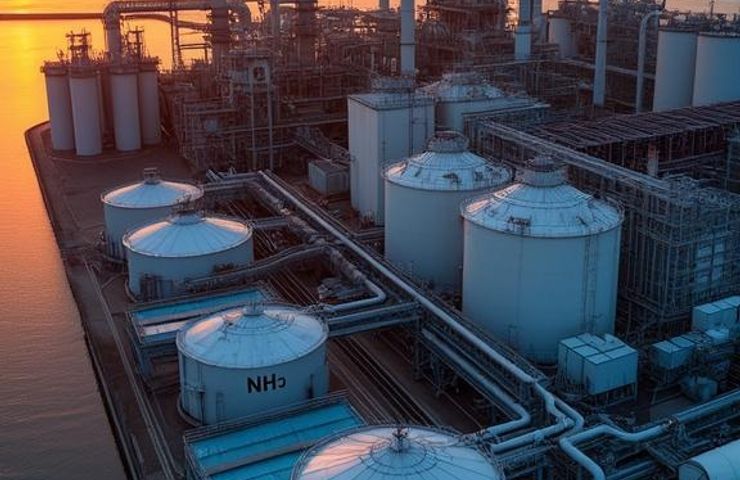
ExxonMobil’s Baytown Plant Aims to Pioneer Low-Carbon Hydrogen Production
August 8, 2025The race to slash emissions in heavy industry has hit a pivotal moment as ExxonMobil and its partners gear up to build what could be the world’s largest low-carbon hydrogen plant in Baytown, Texas.
ExxonMobil unveiled plans for a Baytown facility designed to churn out up to one billion cubic feet of hydrogen per day through steam methane reforming paired with robust carbon capture. ADNOC is bringing a 35% equity stake to the table, while offtake agreements are being hashed out with Japan’s Marubeni Corporation and Mitsubishi Corporation. The goal is to turn that low-carbon hydrogen into export-ready clean ammonia for industrial customers. A final investment decision is expected by mid-2025, with first hydrogen slated for 2029—but fading U.S. incentives, especially the Section 45V tax credit, mean nailing down long-term offtake deals will be critical to the project’s viability.
Low-Carbon Hydrogen and Ammonia Production
The heart of the Baytown scheme is so-called blue hydrogen. Natural gas feeds into steam methane reforming units, generating hydrogen and CO₂. Advanced carbon capture tech then scoops up to 98% of the CO₂, purifies it on-site, compresses it, and injects it into secure geological formations under the Gulf Coast—keeping it from ever hitting the atmosphere.
Once the hydrogen is in hand, some of it fuels existing petrochemical operations at the complex. The rest heads into a giant ammonia synthesis line. By marrying that hydrogen with nitrogen extracted from air using the Haber-Bosch process, the plant will pump out massive quantities of clean ammonia. This energy-dense carrier can sail to Asia, where it’s either cracked back into hydrogen or burned directly for power and industrial heat.
Business and Strategic Implications
For ExxonMobil, Baytown is a cornerstone of its $30 billion low-emission investment push through 2030. The plant dovetails with the company’s net-zero ambitions by slashing scope-2 emissions from its chemical feedstocks and unlocking new revenue streams in hydrogen and clean ammonia sales.
ADNOC views its 35% stake as a big step toward diversifying beyond oil and gas, while Japanese trading houses Marubeni and Mitsubishi are racing to secure long-term supply to hit Japan’s stringent decarbonization targets and fill a domestic hydrogen gap.
Capturing the full benefits of the U.S. Section 45V tax credit—in place until 2028—underpins the project’s economics. Any shift in that incentive risks creating a financing gap, shifting more risk onto equity sponsors and potentially delaying the final investment decision.
Company and Regional Context
Baytown, Texas (pop. 84,000), sits on the eastern fringe of Greater Houston and has been a petrochemical magnet for decades—deep-water docks, sprawling pipelines, and a workforce steeped in refining and chemicals. That makes it an ideal spot to bolt on SMR units and carbon storage infrastructure at ExxonMobil’s existing refinery and chemical plant.
Formed in 1999 by the merger of Exxon and Mobil, ExxonMobil is one of the world’s energy giants. In recent years it’s been ramping up projects in hydrogen, biofuels, carbon capture, and other low-carbon ventures to shore up its portfolio against tougher climate rules and shifting market demand.
Perspective: Navigating Policy & Market Risks
Policy certainty remains the biggest hurdle. The U.S. Treasury’s recent tightening of Section 45V tax credit criteria has everyone racing to lock in an FID by mid-2025. Without clear rules, investors may balk and lenders could demand heftier returns or iron-clad guarantees.
On the demand side, Japan’s relentless focus on industrial decarbonization and its own limited hydrogen capacity make it a natural off-taker. But until those offtake contracts are signed, the project’s financing hangs in the balance. As one industry analyst put it, “You need strong policy backing and rock-solid offtake deals, or you risk stranded assets.”
A stumble at Baytown could ripple through the nascent hydrogen sector—delaying other U.S. projects, spooking investors, and denting America’s green credibility. Nail the schedule, though, and the U.S. cements its lead in industrial decarbonization and paves the way for massive investments in hydrogen infrastructure.
Closing Insight
Baytown is more than just a facility—it’s a litmus test for the hydrogen economy. If ExxonMobil and its partners can mesh cutting-edge CCS, global partnerships, and timely policy incentives, they’ll set a new standard for large-scale clean ammonia and hydrogen production. With the Section 45V tax credit window closing fast, the world is watching to see if corporate ambition and public policy can truly align to decarbonize heavy industry.



 With over 15 years of reporting hydrogen news, we are your premier source for the latest updates and insights in hydrogen and renewable energy.
With over 15 years of reporting hydrogen news, we are your premier source for the latest updates and insights in hydrogen and renewable energy.
This small operation looks more and more like a “catch and kill” operation for an enemy of rapid expansion of H2 production in the U.S. Exxon Mobil has one goal, to be sure that every barrel of their billions of “provable oil reserve” barrels or their billions m3 of gas in the ground will be burned, before the planet is cooked, or sanity about climate wins . We need H2 at scale now !